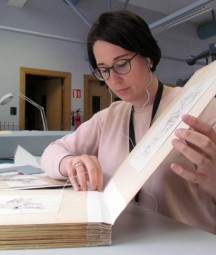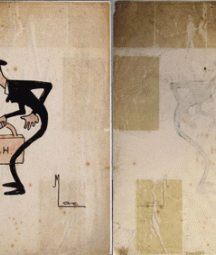Intro by Justin Furlong, NLI Newspaper Librarian
This is the third in a series of blogs connected to a joint project (Newspaper Descriptors Project) by the National Library of Ireland and the Newspaper & Periodical History Forum of Ireland (NPHFI). The project hopes to provide short descriptors or pen notes for the newspaper titles listed in our Newspaper Database here at the National Library. The descriptors include such information as publication dates, proprietors and funding, editors and significant journalists, circulation figures (if known), comment on the newspaper’s political affiliation, and mention any histories written on the various titles.
We're delighted to present this piece on the Freeman's Journal, written by Felix M. Larkin, Chairman of the Newspaper and Periodical History Forum of Ireland and a member of the statutory Readers Advisory Committee of the National Library of Ireland...

Masthead on the last ever issue of the Freeman's Journal on Friday, 19 December 1924
Freeman’s Journal
The Freeman’s Journal (originally known as the Public Register, or Freeman’s Journal) was published in Dublin continuously from 1763 to 1924. In its early years, it was associated with the ‘patriot’ opposition in the Irish parliament in College Green. There was then a brief interlude when it had a dubious connection with Dublin Castle – under the editorship and later proprietorship of Francis Higgins (known as the ‘Sham Squire’) between 1784 and 1802. Higgins bequeathed the Freeman to one Frances Tracy, probably his illegitimate daughter. On her marriage, it passed to her husband Philip Whitfield Harvey. Under his ownership, the Freeman gradually recovered its independence from government influence. Harvey died in 1826 and was succeeded by his son-in-law, Henry Grattan, a son of the parliamentarian. In 1831 the Freeman was purchased by its first Catholic editor, Patrick Lavelle, a valuable but over-zealous advocate of repeal of the Act of Union. He died in 1837, and in 1841 his widow sold the paper to Sir John Gray.
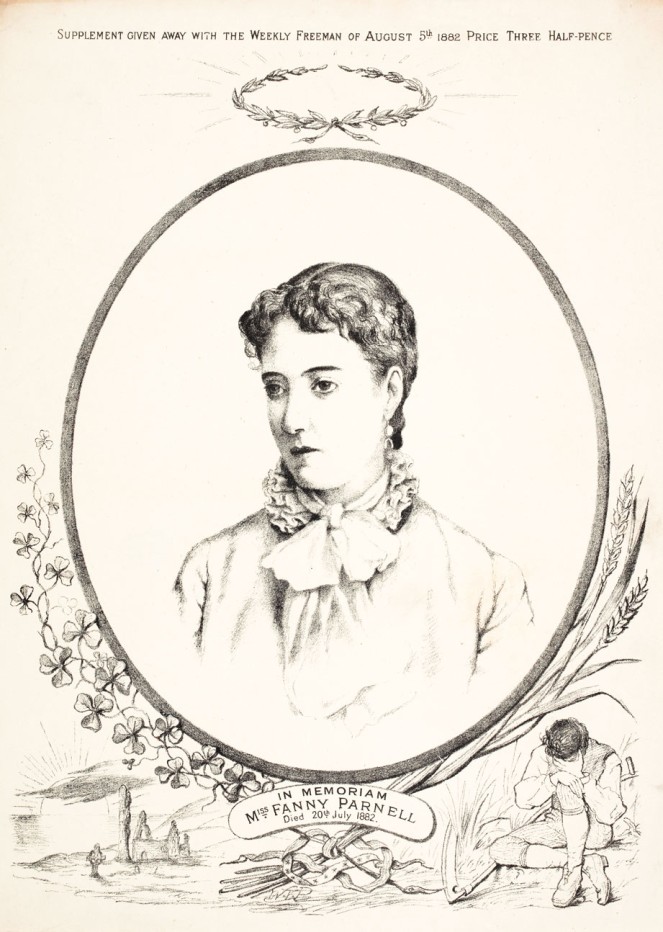
Supplement given away with the Weekly Freeman on Saturday, 5 August 1882. NLI ref. Weekly Freeman 1882 August 5 (A)
The Gray family was associated with the Freeman for the next fifty years. Their involvement spanned three generations of the family, and they made the Freeman an important newspaper. The repeal in the 1850s of the oppressive duty on advertisements and then on the newspapers themselves opened the way for a great expansion in the newspaper market, and Sir John Gray exploited this opportunity, growing the circulation of the Freeman from as little as 2,000–3,000 copies per day to approximately 10,000 at the time of his death in 1875. Under his son, Edmund Dwyer Gray, the Freeman’s production capacity was further increased, its circulation again grew threefold — to over 30,000 copies per day, a market share of about forty per cent — and it became extremely profitable. In 1887 Edmund converted the Freeman into a public company, while retaining control for himself and his family. He died at the early age of forty-two in 1888, and for the next four years the company was effectively under the control of his widow and their young son, also Edmund Dwyer Gray.

Supplement given away with the Weekly Freeman on Saturday, 22 February 1890. NLI ref. Weekly Freeman 1890 February 22 (A)
From the mid 1870s, the Freeman was the unofficial organ of the Irish parliamentary party at Westminster. It at first opposed Parnell’s rise within the party, but was eventually whipped into line. At the outset of the Parnell ‘split’, the paper supported Parnell. However, once the anti-Parnellites launched their own daily newspaper, the National Press, in March 1891 and the Freeman began as a result to lose circulation and revenue, it switched sides. The Freeman and the National Press later merged in March 1892, with Mrs Gray selling her interest as part of the deal. There followed a long and bitter struggle for control of the paper between rival anti-Parnell factions led by Tim Healy and John Dillon, both MPs; this struggle was ultimately resolved in the latter’s favour in 1896. Thomas Sexton, another prominent anti-Parnell MP, had become chairman of the Freeman company in 1893, and he remained chairman until 1912. He retired from parliament in 1896, and afterwards he tended to use the paper to try to impose his will on his erstwhile colleagues. Sexton was increasingly out of sympathy with them, and this was reflected in fractious criticism of the party by the Freeman – most notably, in relation to Wyndham’s land purchase scheme in 1903.
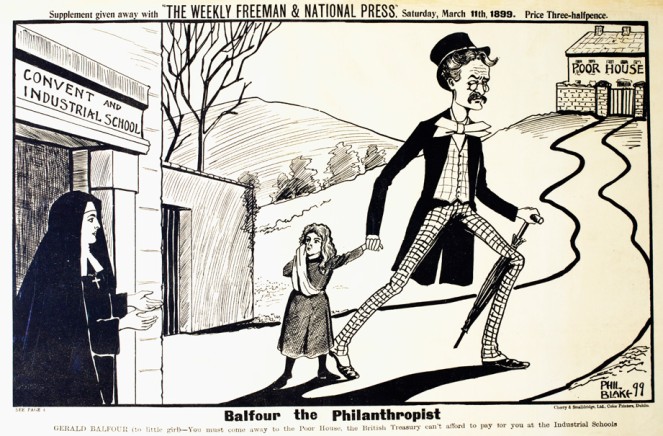
Balfour the Philanthropist - Supplement given away with the Weekly Freeman and National Press on Saturday, 11 March 1899. NLI ref. Weekly Freeman 1890 March 11 (A)
The period of Sexton’s chairmanship was one of relentless decline in the Freeman’s fortunes. The National Press had inflicted grave damage on it, and it continued to face strong competition from the Irish Daily Independent – established as a pro-Parnell organ when the Freeman changed sides in the ‘split’ and purchased by William Martin Murphy in 1900. The paper thus lacked funds for investment and was unable to respond to the greatly increased demand for newspapers at this time. It is estimated that total sales of daily newspapers in Ireland grew by a factor of seven between the early 1880s and the 1920s – from 75,000 copies per day in the 1880s to over half a million in the 1920s. However, the Freeman’s daily circulation remained at 30,000-35,000 copies, and the company did not have the production capacity for more. When Murphy transformed his paper into the modern, mass-circulation Irish Independent in 1905 – at half the price of the Freeman and in a more popular format – it sealed the Freeman’s fate. The ‘new’ Independent soaked up the increased demand and became the market leader. The Freeman soon began to incur trading losses, and no dividends were paid by the company after 1908. Sexton hung on for some time, but the Irish party leaders finally acted to save the paper and forced his resignation in 1912. Subsequently, the Freeman was run by a group of party stalwarts and subsidised from party sources until it was sold off after the party’s defeat in the 1918 general election.
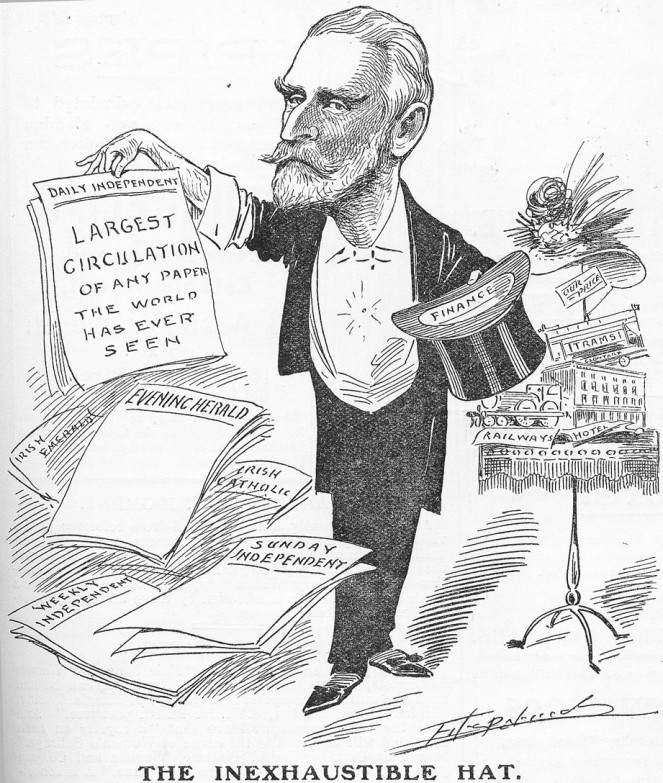
The Inexhaustible Hat - cartoon by Thomas Fitzpatrick in the satirical monthly The Lepracaun, December 1908. NLI ref. Ir 827 L 1
The Freeman’s last owner was a prominent Dublin businessman, Martin Fitzgerald. He purchased the paper in October 1919 and gallantly kept it going for another five years. It became the unofficial organ of the Irish Free State government, a role similar to that it had had with the Irish party. The last issue appeared on 19 December 1924. The Freeman’s assets, including the title, were later bought by the Irish Independent, which for many years afterwards carried in its masthead the legend ‘Incorporating the Freeman’s Journal’.
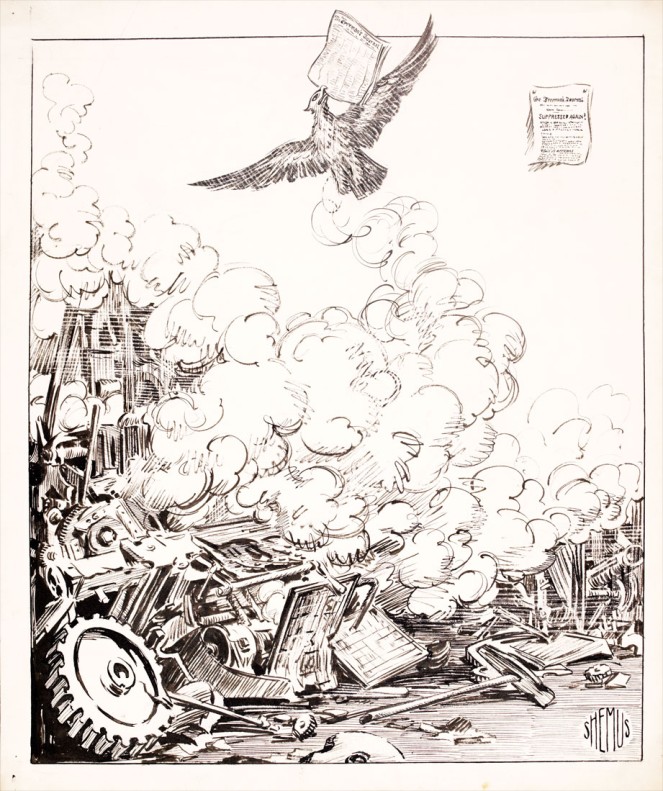
The Freeman's Journal printing presses were destroyed by Anti-Treaty forces in March 1922. This Shemus (Ernest Forbes) cartoon was published on 22 April 1922 to celebrate the Freeman's relaunch. NLI ref. PD 4309 TX 118
Editors (list incomplete pre-1860):
Henry Brooke (1763–4), Mathew Carey (1780–3), Michael Staunton (1813–24), John Blake Gallaher (c.1860–84), Edward Byrne (1884–91), William J. McDowell (1891–2), William Henry Brayden (1892–1916), Patrick Hooper (1916–24).
Relevant Dictionary of Irish Biography (DIB) entries:
1. Proprietors: Martin Fitzgerald, Henry Grattan Jr, Edmund Dwyer Gray (with Caroline Agnes Gray), Edmund Dwyer Gray Jr, Sir John Gray, Philip Whitfield Harvey, Francis Higgins, Thomas Sexton.
2. Journalists: Matthias McDonnell Bodkin, William Henry Brayden, Henry Brooke, Edward Byrne, Mathew Carey, Patrick Hooper, J.P. Nannetti , John Fergus O’Hea, Michael Staunton.
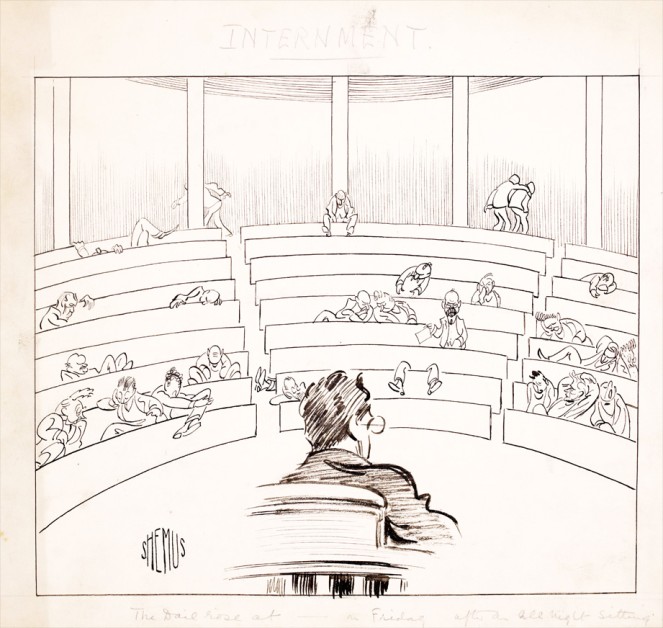
Shemus (Ernest Forbes) cartoon portrayal of Dáil Éireann's first all-night sitting, published in the Freeman's Journal on 14 July 1923. NLI ref. PD 4309 TX 216
Bibliography:
- Brian Inglis, The freedom of the press in Ireland, 1784–1841 (London: Faber & Faber, 1954).
- Thomas Bartlett (ed.), Revolutionary Dublin, 1795–1801: the letters of Francis Higgins to Dublin Castle (Dublin: Four Courts Press, 2004).
- Felix M. Larkin, ‘A great daily organ: the Freeman’s Journal, 1763–1924’, History Ireland, 14:3 (May/June 2006).
- Felix M. Larkin, ‘Mrs Jellyby’s daughter: Caroline Agnes Gray (1848-1927) and the Freeman’s Journal’ in Felix M. Larkin (ed.), Librarians, poets and scholars: a Festschrift for Dónall Ó Luanaigh (Dublin: Four Courts Press, 2007).
- Felix M. Larkin, ‘Two gentlemen of the Freeman: Thomas Sexton, W.H. Brayden and the Freeman’s Journal, 1892–1916’, in Ciara Breathnach & Catherine Lawless (eds), Visual, material and print culture in nineteenth-century Ireland (Dublin: Four Courts Press, 2010).
